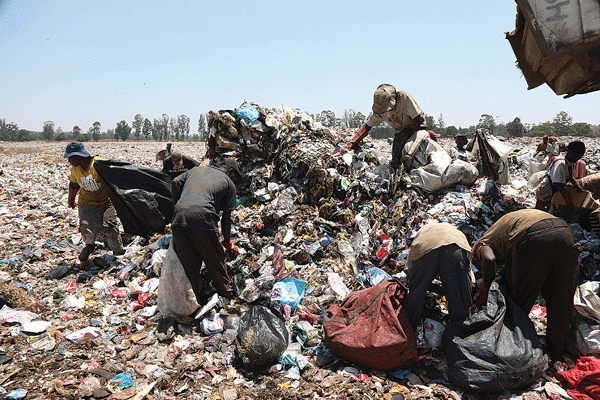
ZIMBABWE and Malawi are likely to suffer severe economic shocks resulting from the El Nino-induced drought, the Famine Early Warning Systems Network (FewsNet) has warned.
According to the report issued this week, staple grain supplies are likely to decline due to erratic rainfall, leading to acute food shortages.
The El Niño phenomenon, which is forecast to reach peak intensity in late 2023 and dissipate by mid-2024, is expected to result in below-average rainfall across southern Africa.
The drought follows localised below-average harvests in 2023 and poor macroeconomic conditions in Zimbabwe and Malawi.
“The negative impacts of the El Niño during the 2023/24 rainy season, including low labour opportunities and high food prices, are expected to offset any recent improvements from declining inflation,” said FewsNet’s food security analyst Madeline Murphree.
The rainfall deficits will likely result in below-average 2024 harvests, including in surplus-producing South Africa and Zambia.
“The negative impacts of the El Niño during the 2023/24 rainy season, including low labour opportunities and high food prices, are expected to offset any recent improvements from declining inflation.
“Meanwhile, other hazards in the region are also contributing to food assistance needs, including conflict in the Democratic Republic of Congo and Mozambique,” she said.
- El Niño to hit Zim, Malawi economies
Keep Reading
It is estimated that over 20 million people will be in need of food assistance during the January-to-March 2024 peak of the lean season.
The expected below-average 2024 harvests will be exhausted earlier than usual, leading to comparably high food assistance needs at the start of the following lean season later in the year to signal even higher needs when the lean season peaks in early 2025.
Deficit-producing areas of Zimbabwe, southern Malawi, southern and central Mozambique, and southern Madagascar would be of the highest concern.
“Governments, donors, humanitarian partners, and other stakeholders should prepare for high food assistance needs through to early 2025,” Murphree said.
“We are particularly concerned about the impact on children, who are already more vulnerable to malnutrition. Malnutrition can have a long-term impact on children’s physical and cognitive development,” she said.
The El Niño phenomenon is also expected to have a negative impact on livelihoods in southern Africa where poor households typically rely on income from casual labour and petty trade.
“The El Niño event is a major threat to food security and livelihoods in southern Africa. We urge governments, donors and humanitarian partners to take urgent action to mitigate the impacts of the drought and protect the most vulnerable populations,” she added.
The report indicated that the supply of staple grains will likely decline throughout the 2023/24 agricultural season.
“In October, some farmers with surplus grain were speculatively holding on to their stocks in response to El Niño forecasts.
“As stocks diminish, grain prices will likely increase above normal levels in deficit-producing areas, increasing reliance on maize meal. Generally, US$ prices of basic food and non-food commodities are expected to remain stable, with poor households relying mainly on informal retail shops and open markets where prices are relatively lower than formal chain supermarkets,” it said.
It further indicated that short-lived price increases associated with the end-of-year festive season were likely for some commodities and areas.
“El Niño-induced poor rainfall is likely to negatively impact the area planted and crop conditions, leading to lower-than-normal seasonal agricultural labour opportunities and labour rates.
“Likely erratic and cumulatively below-average rainfall is expected to result in a below-average 2024 harvest. Anticipated water challenges, especially in typical low rainfall areas, compounded by ongoing macroeconomic challenges, will likely drive below-normal engagement in non-agricultural casual labour and self-employment.”
FewsNet further said livestock body conditions, especially cattle, were expected to decline as water and pasture conditions deteriorate, impacting livestock sales.
“An increasing proportion of households are likely to engage in or expand income-earning opportunities from petty trade, but increased competition will negatively impact income.
“Informal mining is expected to increase as a source of income for participating households. The barter of livestock and other commodities for food is likely to increase, although terms of trade are expected to remain unfavourable for poor households,” the report said.









